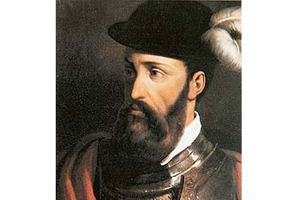Horticulturist people
– Pitren Culture (600-1532): they lived between the Biobio river (Region of Biobio) and the north bank of lake Llanquihue (Region of Los Lagos) during the agricultural ceramic period.
They were the first horticulturist culture (they grew corn and beans). However, this wasn’t their only means of sustenance, they also gathered wild fruit, such as pine nuts, and hunted guanacos and deer. Details regarding their daily life are unknown to this day. All we know is they lived in homes located in small clearings inside the forests, although they switched locations constantly. It is believed that they organized themselves in small family groups that were relatively independent. The only authority was the head of the family. Their cemeteries were small and isolated, but some of them contained mass graves. The deceased were accompanied by offerings, which consisted of vases and pipes (the ones in the shape of an upside-down T are especially noteworthy). Their pottery is the oldest in the area; it was executed in mainly monochrome surfaces, using dark colors.
These pieces also came in a variety of shapes, from globular bottles painted in red or black, to jugs shaped like animals, pumpkins or human beings. They also made the first known asymmetrical vases, known as jarros pato (duck-shaped jugs). .
– El Vergel Culture (1000-1500): this culture inhabited the valleys and coastline between the Itata (Region of Biobio) and Tolten rivers (Region of Araucania) in the late agricultural pottery period. They did not form villages, only family groups that kept social ties with other nearby groups in major socio-cultural units.
They developed small-scale agriculture (growing potatoes, quinoa, corn, beans and squash), gathered wild fruit and seafood, and they hunted camelids, sea lions, pudus, foxes, sea otters, coypus, frogs and aquatic birds. They only fished, mainly along the shore.
They buried their dead in small groups who were probably related to each other in large ceramic urns or vats, sometimes decorated in white or red.
Other forms of burial include internment of bodies surrounded by stones and simple burials with the bodies laid out or inside wooden canoes.
Their signature pottery consisted of large vases used as funerary urns and jugs in the shape of ducks.
They also made bracelets, necklaces and earrings out of copper, silver, bone and sea lion teeth.
Relief
The Region of Biobio preserves the four geographical features seen in neighboring regions, but here they present some unique traits.
– Coastal plains: two areas can be distinguished. The first in north of the Biobio river and is characterized for presenting high erosion levels, sheer cliffs and few plains. The other area –all the way to the south of the Biobio river, in the mouth of the Andalien river- has scarce development, especially the Arauco-Cañete plain, where the average width of marine terraces reaches 25 km. The country’s main coal deposits are located here.
– Coastal Mountain Range: this mountainous chain continues to decrease in height in this region. To the north is has peaks and valleys with an average height of no more than 400 masl, including basins like Quirihuel. South of the Itata river, it turns into an eroded mass, with peaks no higher than 650 masl. The main hills are Quilme and Cayumanqui. Farther south, it becomes almost imperceptible until it reaches the Biobio river. After this hydrographic basin, it is called the Nahuelbuta mountain range, and has peaks as high as 1,400 masl. It lasts all the way to the area near the Imperial river (Region of Araucania).
– Intermediate depression: it is very wide in the northern part of the region; up to 100 km near Chillan. To the south, this longitudinal valley starts to narrow. South of the Biobio, the plain continues and only a few peaks surpass 3,000 masl. A few noteworthy peaks are Nevado de Chillan (3,212 masl), Callaqui volcano (3,164 masl), Chillan volcano (3,122 masl), Las Minas hill (3,005 masl), Antuco volcano (2,985 masl), Copahue volcano (2,969 masl) and Tolhuaca volcano (2,780 masl), almost on the border with the Region of Araucania.







